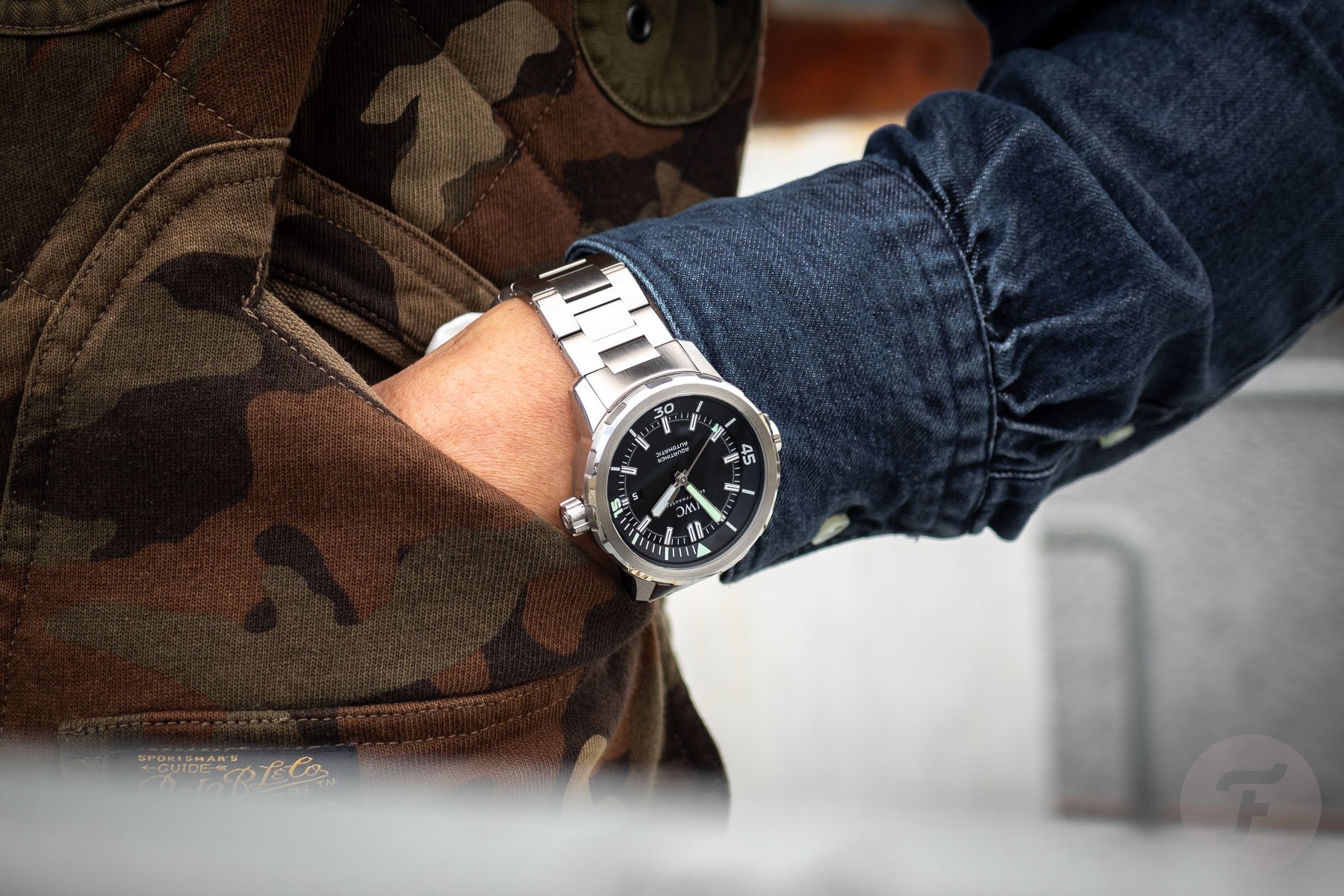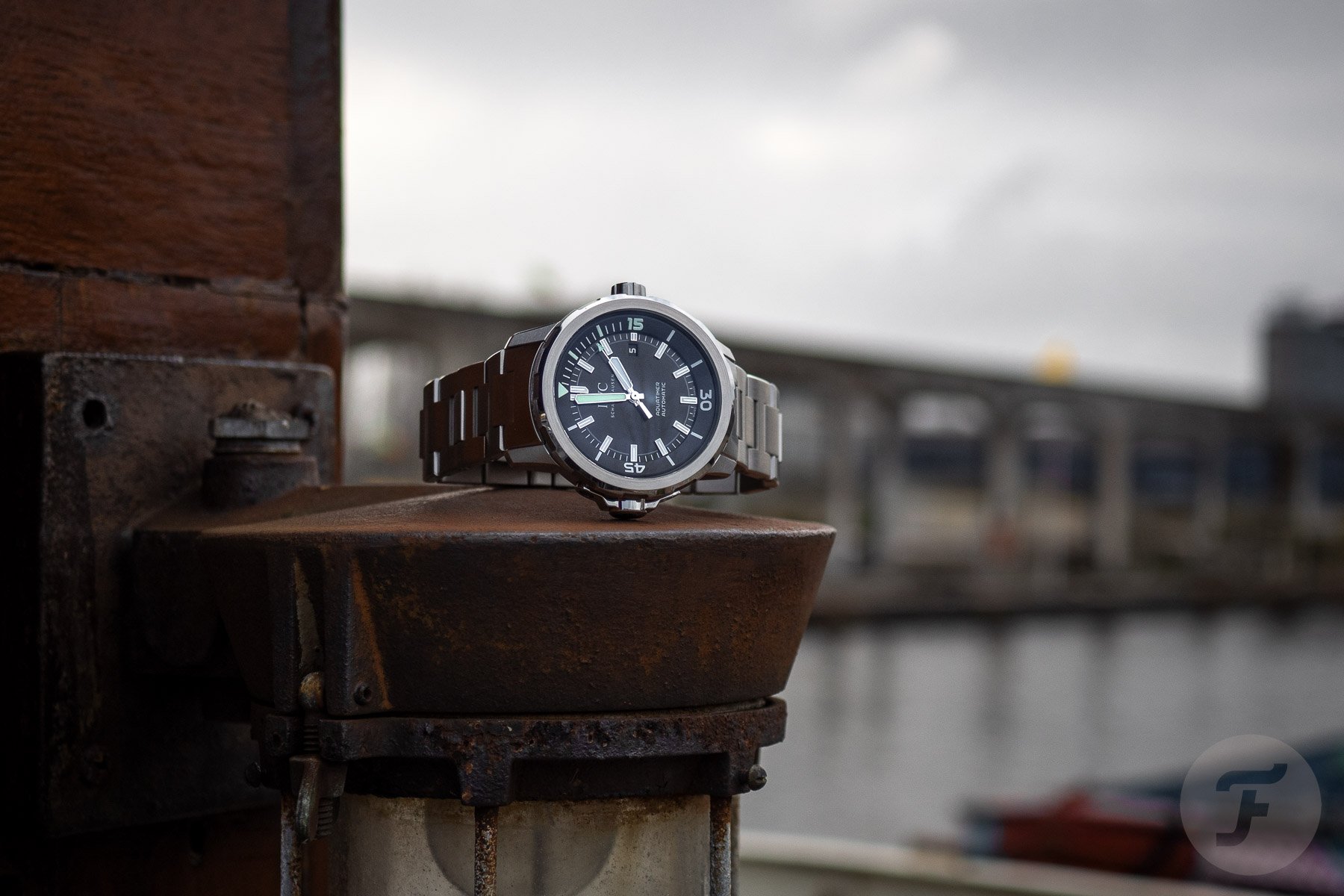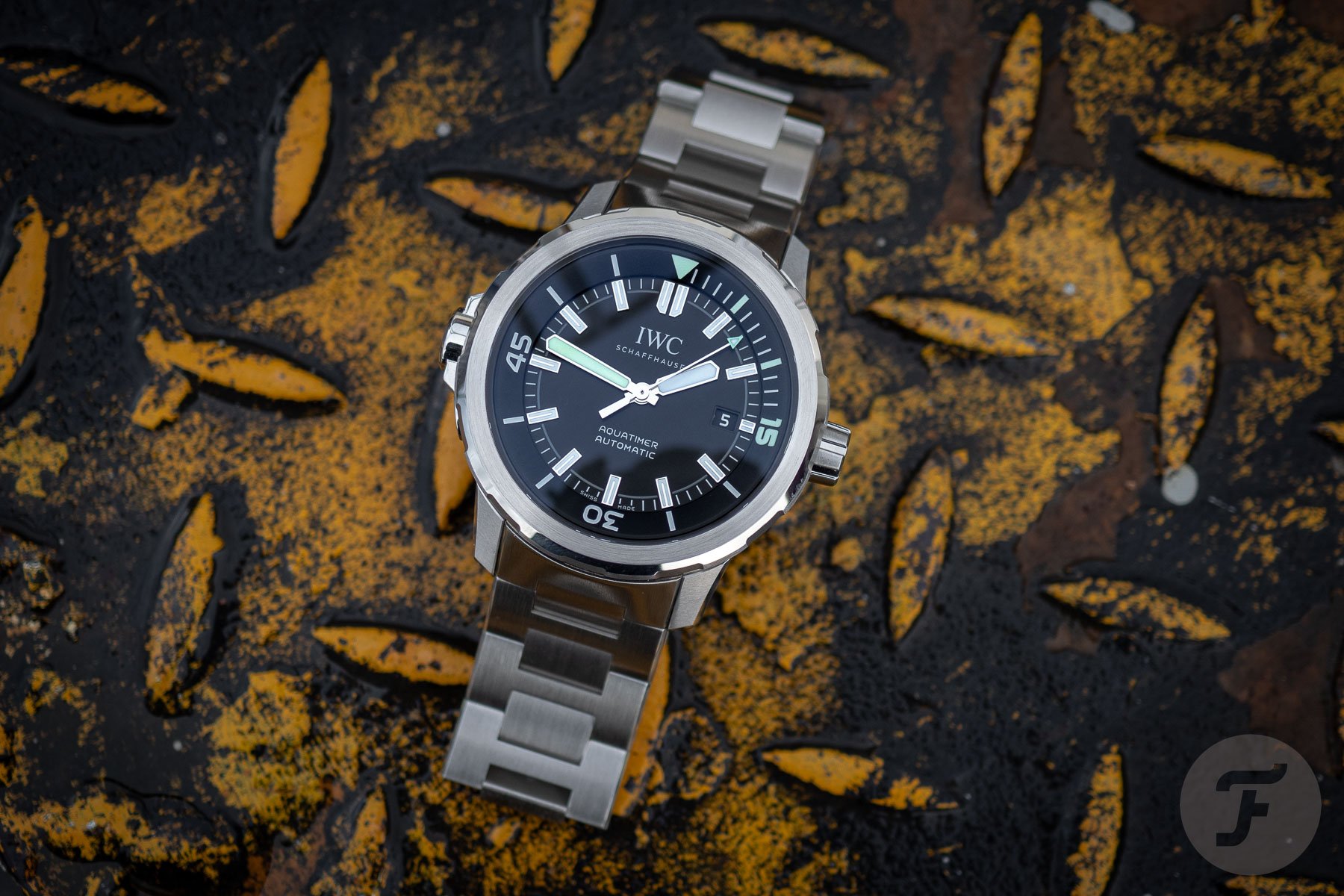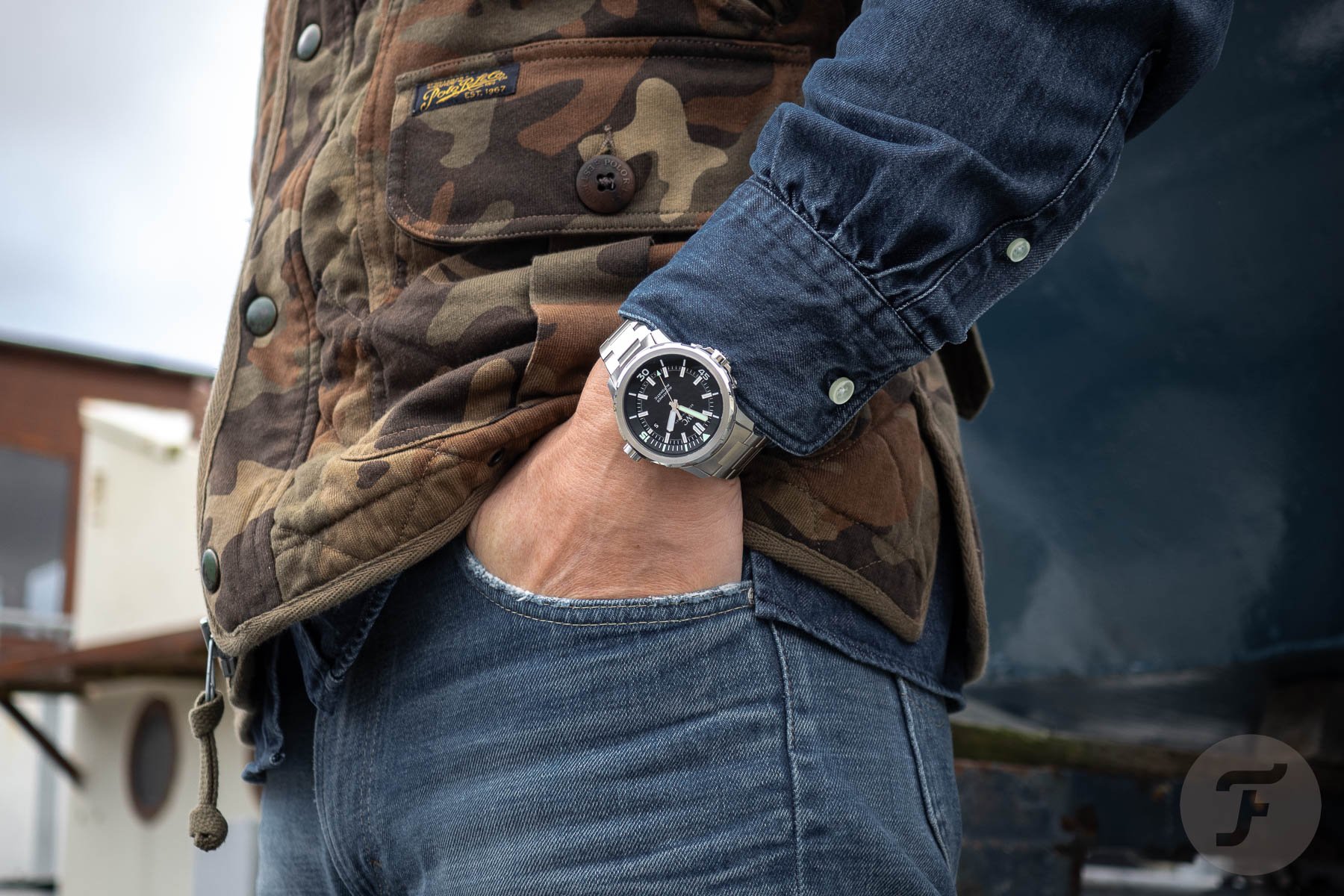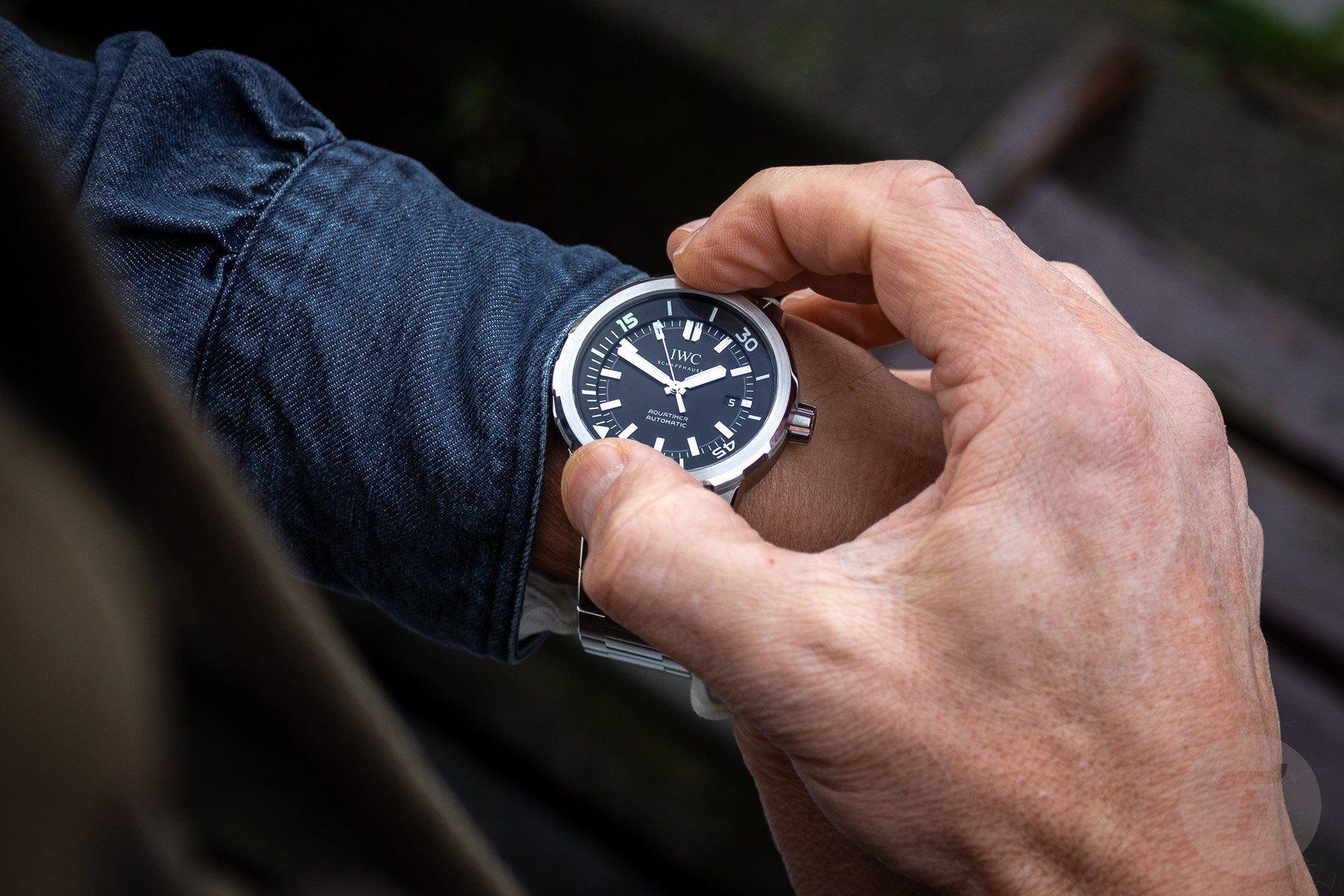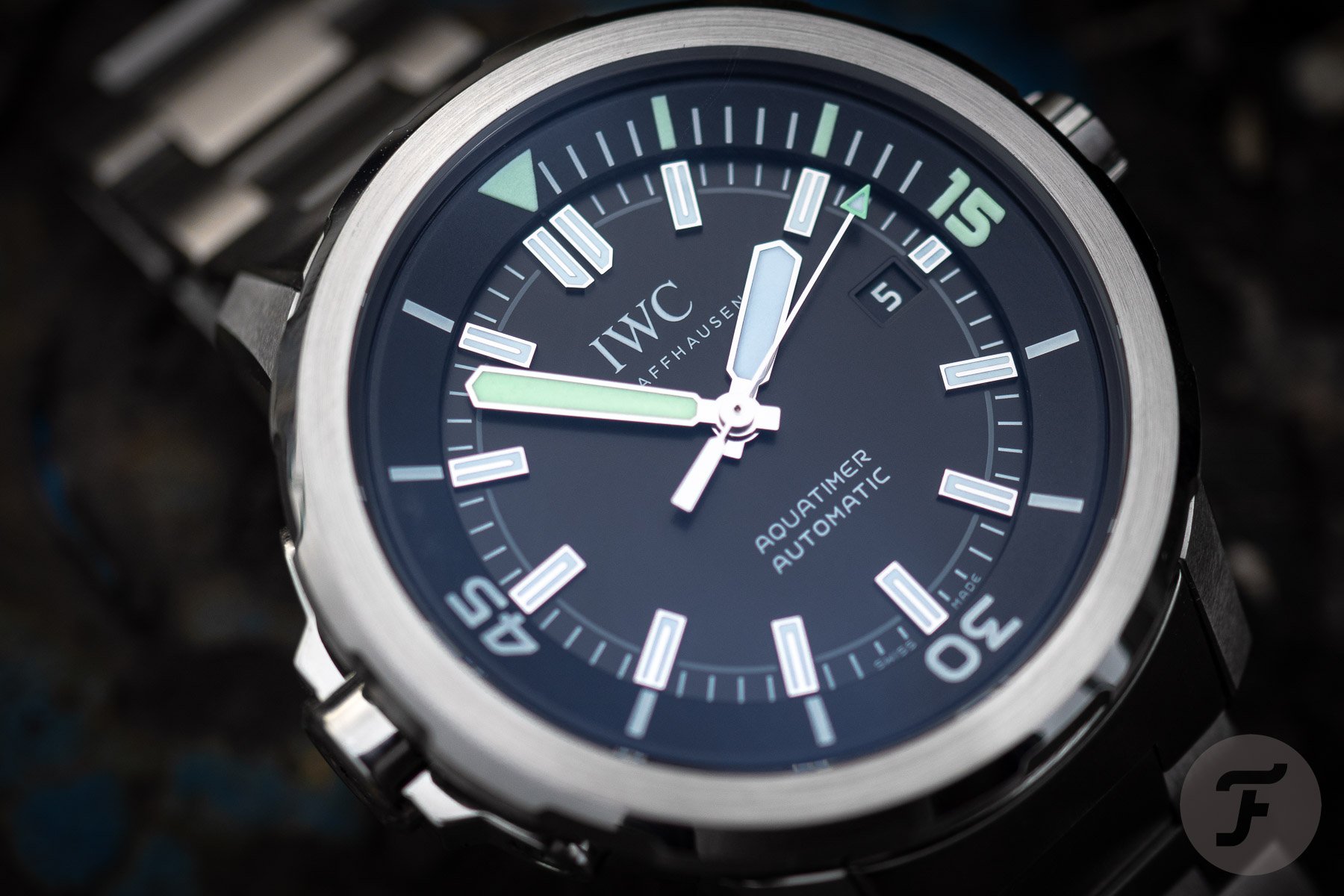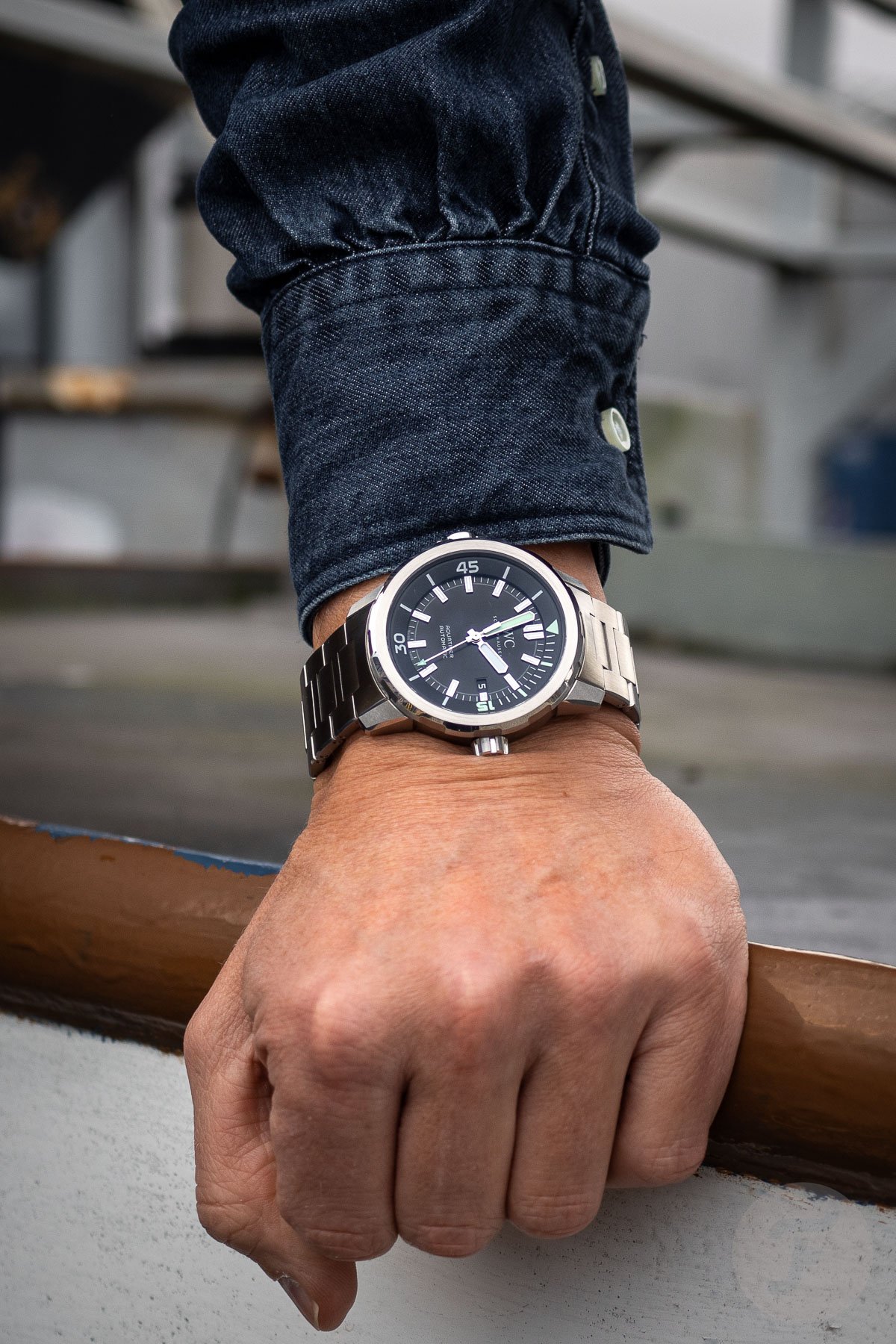Thinking Of Things To Come In 2024 With The IWC Aquatimer Automatic On The Wrist
Watches and Wonders 2024 might still be months away, but looking at the IWC Aquatimer Automatic that recently arrived at Fratello HQ got me thinking of the upcoming watch salon. Last year, it was all about the revamped Ingenieur. What will we see emerge from the manufacture in Schaffhausen in 2024? Undoubtedly, there will be a few new Pilot’s Watch models since those form the backbone of IWC, but what about a completely new Aquatimer? I think it’s about bloody time! The current collection is 10 years old. Having said that, the 42mm Aquatimer Automatic didn’t feel outdated or old-fashioned on the wrist. But it did make me ponder what IWC has up its sleeve for 2024.
The 10 references in IWC’s current Aquatimer lineup share a basic design that was introduced in 2014, the last time this collection of dive watches received an update. The decade-old design doesn’t necessarily feel old, but it also isn’t a fresh face any longer. The Aquatimer Automatic (IW328803) on my wrist — a watch with a price of €7,550 / US$7,000 — feels like it’s on its last legs. Maybe that sounds a bit too harsh. Maybe I should say that if you’re in the market for a high-end, luxurious, mechanical dive watch, the Aquatimer is not the first that comes to mind. There are way too many more recently introduced divers around to keep your mind occupied. A revamped, reworked, or completely newly designed Aquatimer could change that. But what should IWC do? Let’s check out the Aquatimer Automatic and try to come up with a possible answer.
IWC Aquatimer Automatic: exploring the past and the present
With a more or less constant stream of new dive watches with logos of all major Swiss watch brands on the dial, IWC seemed to have slowly drifted out of the picture. The Aquatimer Automatic IW328802 on my wrist is a model that was released in 2022 as an upgrade/update of the reference IW329001, the model launched in 2014. The 42 × 50 × 14.1mm case stayed the same, but the 2022 model did receive some other updates.
The aesthetic update was subtle, while the technical update was much more substantial. Inside the original model beat the automatic caliber 30120, a 4Hz automatic movement from ETA or Sellita with a 42-hour power reserve. The updated Aquatimer Automatic uses the caliber 32111. This 4Hz movement, featuring a bidirectional pawl-winding system, has 164 components and a 120-hour power reserve. It’s not an ETA/Sellita-sourced movement but, rather, an “in-group” caliber made at Richemont Group’s ValFleurier movement-making facility. Caliber 32111 shows central hours, minutes, central hacking seconds, and a date at 3 o’clock. It also uses a silicon escape wheel and pallet lever plus newly developed lubricants for lengthier service intervals.
The Ocean 2000 and the reference 812 of yesteryear
The new movement and updated looks still can’t hide the fact that the watch is, in essence, 10 years old. But it also uses design elements inspired by the 1982 Ocean 2000, a watch with a smooth and futuristic design by Ferdinand A. Porsche. By the way, IWC’s underwater story started way earlier than the 1980s. While maybe not as far back as some of the other Swiss manufacturers of iconic dive watches like Omega, Rolex, and Blancpain, 1967 is still 57 years ago.
IWC’s first dive watch was the Aquatimer ref. 812. The 37mm watch with twin crowns and an inner rotating bezel was aimed at a growing number of sports divers. Is the first Aquatimer the most iconic, or is the Porsche-designed one even more so?
The current Aquatimer Automatic
Before speculating on a new Aquatimer and looking at its predecessors, it’s probably a good idea to take a closer look at the current one on my wrist. If you told me to describe the watch in one word, I would probably say “over-engineered.” And that’s a good thing when it comes to an instrument that helps to keep you safe in a hostile environment. “Over-engineered” is another way of saying something is robust and sturdy. It’s also quite angular and has a distinct look that sets it apart from other dive watches.
In my opinion, the best feature is the bidirectional bezel that moves the unidirectional inner dive scale. This SafeDive system clearly represents IWC’s engineering side. When you turn the bezel counterclockwise, it engages the inner bezel. When you turn the bezel clockwise, however, it doesn’t affect the inner one. Another useful feature of this 300m-water-resistant watch is the screw-in crown at 3 o’clock. Visually, that crown is balanced by something at 9. I use the word “something” deliberately because you might think the extrusion is a helium escape valve. It isn’t. It might look like it is, but the small bulge houses a part of the SafeDive device.
(Too) instrumental and utilitarian
The Aquatimer Automatic has a convex sapphire crystal with an antireflective coating on both sides above the dial, but it doesn’t want you to see its inner workings. Instead of a see-through case back, the watch features a steel case back with eight circular holes for the IWC case-opening tool.
What the watch also doesn’t have is an elegantly tapering bracelet. The all-brushed, three-row bracelet with a quick-change system has a generous 22mm width all the way around. The angular, almost stocky case combined with a non-tapering, solid bracelet leads to an instrumental and utilitarian look. But these looks and the hefty weight of 209 grams also could do with a touch of evolutionary refinement. And that conclusion leads to speculation of a 2024 Aquatimer.
GST: gold, steel, and titanium
The Ocean 2000 was the result of a collaboration between IWC and Porsche Design. But when this two-decade-long partnership ended, a gap in IWC’s collection needed to be filled with new watches. Enter the GST. The name of the collection stood for “gold, steel, titanium,” and under the GST moniker, chronographs, alarm watches, chronographs, and dive watches debuted. Two GST dive watches come to mind when imagining a future Aquatimer. The first is the famous and spectacular Deep One ref. 3527 because of its features and bright looks, but the second is the more toned-down GST Aquatimer ref. 3536, which debuted in 1998. The latter is more understated than the Deep One with its mechanical depth gauge, yet it’s still safe to use underwater to depths of up to 2,000 meters.
The 1998 GST Aquatimer came in three variants. The steel (3536)-2 variant showed a black dial, the -3 version had a white dial, and the -1 version came in titanium with a black dial. Just like last year’s Ingenieur, a revised and updated variant of this underwater GST with its smooth transition between case and bracelet/strap could come out in two basic materials and different dial variants. That’s all very historically correct, but if done right, it could also be future-proof. What do you think or feel deep down? Do you want a completely new Aquatimer, an updated version of the current model, or something based on one of the dive watches from the past? Just let me know in the comments below.

